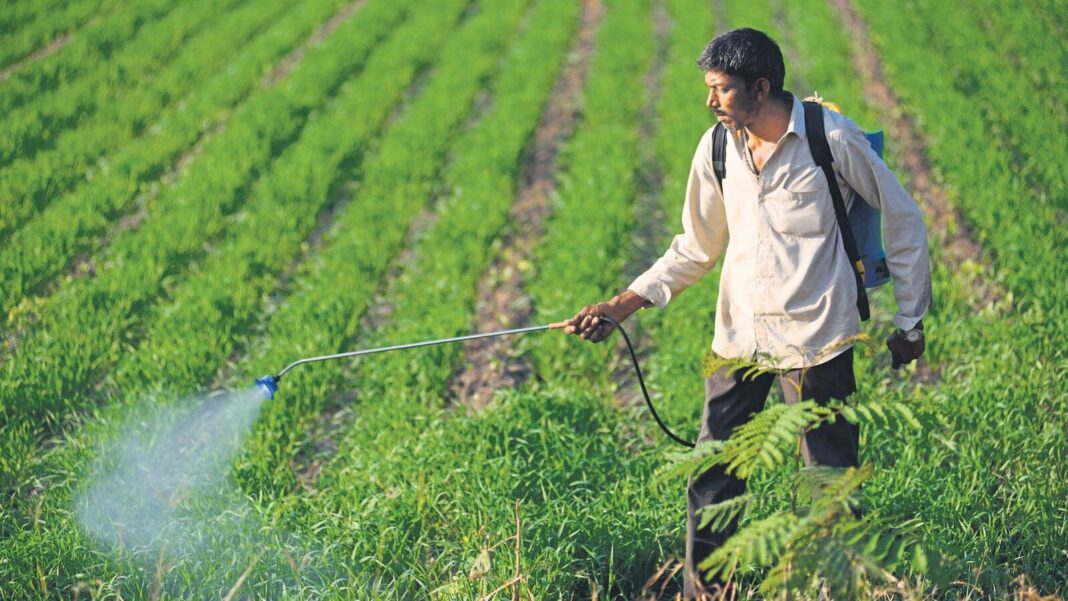In Short:
Prashant Biyani from Elara Capital notes that while domestic companies are recovering, exporters face challenges with stable prices due to competition from China. A report highlights improving agrochemical supplies and stable demand, though the sector struggled with export drops and pricing pressures. Industry leaders express optimism about long-term growth despite challenges like erratic weather affecting agricultural activities.
Are Green Shoots Sprouting in Agrochemicals?
Prashant Biyani, the Vice President of Institutional Equity Research at Elara Capital, has observed a significant shift in the global inventory situation. He mentions that while domestic companies are starting to experience relief, it’s a different story for exporters. Even though there’s a recovery in volumes, prices are struggling to catch up due to an abundance of supplies from China.
Signs of Recovery in Agrochemicals
A recent report from ICICI Securities, dated June 19, highlights promising trends in the agrochemical sector, especially concerning supplies for innovators. The report reveals that agrochemical inventory levels have dipped below normal, providing a bit of comfort, and demand appears to be stable.
As U.S. agrochemical firms ramp up their outsourcing and switch to an asset-light model, the doors are wide open for Indian specialty chemical companies to seize larger market opportunities.
Challenges in FY24
The chemicals and agrochemicals sector faced tough times in FY24, primarily due to dwindling export demand, aggressive pricing strategies from China, and ongoing pricing pressures. The logistics disruption following the Red Sea incident in December 2023 only compounded these issues. Despite some volume growth in the June quarter owing to lower global inventories, anxiety lingers as China’s agrochemical production surged nearly 50% year-on-year from January to July 2024, raising concerns about another potential inventory surplus.
The Road to Recovery
However, there’s a glimmer of hope. Biyani states, “Domestic consumption is already bouncing back, and an export revival seems just over the horizon.” Gaurang Shah, senior vice president at Geojit Financial Services, forecasts positive long-term prospects for domestic agrochemical companies, especially as exports benefit from the evolving China-plus-one strategy.
“Green shoots in the agrochemicals business are already visible. We’re seeing a spike in inquiries,” says Gopal Agrawal, CEO of Anupam Rasayan India Ltd. He highlighted that the agrochemical segment, which accounted for a hefty 65% of the company’s consolidated revenues in FY24, is on a path to recovery by the end of FY25 and is poised for growth beyond that.
Impact of Competition and Capacity
The FY24 performance of agrochemical companies faced hurdles from destocking and intensified competition from Chinese firms, leading analysts to slash earnings estimates significantly over the past year.
Gyanendra Shukla, MD & CEO of Rallis India, explains that the industry is dealing with a price collapse due to mismatches in supply and demand, primarily due to excess capacity from China. Indian enterprises, including some pharmaceuticals, are ramping up their capacities to leverage the China-plus-one trend. Unfortunately, uneven monsoon patterns, with droughts in the northeastern and southern regions, have further dampened consumption and contributed to excessive inventory. Nonetheless, Shukla remains bullish about the sector’s long-term growth potential.
“Our internal estimates peg the Indian agrochemicals market at about ₹40,000 crore, growing at a healthy rate in the high single digits. Despite having ample arable land, our per hectare consumption of agrochemicals is just 0.4 kg, compared to the global average of 2.6 kg, indicating substantial growth potential,” he added. Agrochemicals form the backbone of Rallis India’s business, contributing over 75% to their annual revenue.
“However, the increasingly unpredictable monsoon patterns have disrupted agricultural activities, which might push back the timeline for recovery,” he warned.
A Cautious Optimism from Industry Leaders
Simon Wiebusch, president of Bayer South Asia, shares a cautious optimism regarding the agrochemicals outlook. He mentioned, “The increasingly erratic monsoon patterns have caused delays in agricultural practices, which may affect the recovery timeline.” Wiebusch anticipates a clearer picture of the ongoing Kharif season in the coming weeks.
Global Demand: A Gradual Uplift
As we step into 2024, the macroeconomic climate shows signs of improvement; however, global demand remains moderate and is expected to recover slowly. Biyani points out that even though heavy rainfall has slightly adjusted growth projections downward, a high single-digit year-on-year growth for the September quarter is still within reach, especially compared to the robust double-digit growth seen in the June quarter. He’s optimistic that the latter half of FY25 will bring even better news for the sector.
A report from Centrum on September 5 indicates that despite these challenges, companies have not scaled back on their capital expenditure during FY24 and have mostly persisted with their announced capex for FY25. The focus is shifting toward enhancing capacity utilization and maximizing revenue from newly commissioned projects.
Shah recommends companies like Aarti Industries, Pidilite Industries, PI Industries, Vinati Organics, and UPL within the specialty and agrochemical sectors. He emphasizes that India’s agrochemical demand has a positive long-term outlook, supported by continuous government backing, rising mechanization, and advanced agricultural technologies.





